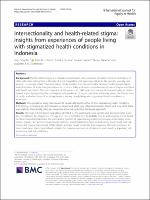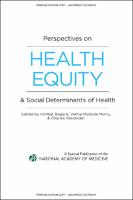Human resources for health: task shifting to promote basic health service delivery among internally displaced people in ethnic health program service areas in eastern Burma/Myanmar
| dc.contributor.author | Low, Sharon | |
| dc.contributor.author | Tun, Kyaw Thura | |
| dc.contributor.author | Mhote, Naw Pue Pue | |
| dc.contributor.author | Htoo, Saw Nay | |
| dc.contributor.author | Maung, Cynthia | |
| dc.contributor.author | Kyaw, Saw Win | |
| dc.contributor.author | Oo, Saw Eh Kalu Shwe | |
| dc.contributor.author | Pocock, Nicola Suyin | |
| dc.coverage.spatial | Myanmar | en_US |
| dc.date.accessioned | 2024-07-18T09:30:49Z | |
| dc.date.available | 2024-07-18T09:30:49Z | |
| dc.date.issued | 2014-09-29 | |
| dc.identifier.uri | https://resources.equityinitiative.org/handle/ei/559 | |
| dc.description.abstract | Background: Burma/Myanmar was controlled by a military regime for over 50 years. Many basic social and protection services have been neglected, specifically in the ethnic areas. Development in these areas was led by the ethnic non-state actors to ensure care and the availability of health services for the communities living in the border ethnic-controlled areas. Political changes in Burma/Myanmar have been ongoing since the end of 2010. Given the ethnic diversity of Burma/Myanmar, many challenges in ensuring health service coverage among all ethnic groups lie ahead. Methods: A case study method was used to document how existing human resources for health (HRH) reach the vulnerable population in the ethnic health organizations’ (EHOs) and community-based organizations’ (CBHOs) service areas, and their related information on training and services delivered. Mixed methods were used. Survey data on HRH, service provision, and training were collected from clinic-in-charges in 110 clinics in 14 Karen/Kayin townships through a rapid-mapping exercise. We also reviewed 7 organizational and policy documents and conducted 10 interviews and discussions with clinic-in-charges. Findings: Despite the lack of skilled medical professionals, the EHOs and CBHOs have been serving the population along the border through task shifting to less specialized health workers. Clinics and mobile teams work in partnership, focusing on primary care with some aspects of secondary care. The rapid-mapping exercise showed that the aggregate HRH density in Karen/Kayin state is 2.8 per 1,000 population. Every mobile team has 1.8 health workers per 1,000 population, whereas each clinic has between 2.5 and 3.9 health workers per 1,000 population. By reorganizing and training the workforce with a rigorous and up-to-date curriculum, EHOs and CBHOs present a viable solution for improving health service coverage to the underserved population. Conclusion: Despite the chronic conflict in Burma/Myanmar, this report provides evidence of the substantive system of health care provision and access in the Karen/Kayin State over the past 20 years. It underscores the climate of vulnerability of the EHOs and CBHOs due to lack of regional and international understanding of the political complexities in Burma/Myanmar. As Association of Southeast Asian Nations (ASEAN) integration gathers pace, this case study highlights potential issues relating to migration and health access. The case also documents the challenge of integrating indigenous and/or cross-border health systems, with the ongoing risk of deepening ethnic conflicts in Burma/Myanmar as the peace process is negotiated. | en_US |
| dc.format.mimetype | application/pdf | en_US |
| dc.language.iso | eng | en_US |
| dc.rights | This work is licensed under a Creative Commons Attribution 4.0 International license (CC BY 4.0). | en_US |
| dc.subject | health system strengthening | |
| dc.subject | health workforce | |
| dc.subject | task shifting | |
| dc.subject | internally displaced people | |
| dc.subject | Burma/Myanmar | |
| dc.title | Human resources for health: task shifting to promote basic health service delivery among internally displaced people in ethnic health program service areas in eastern Burma/Myanmar | en_US |
| dc.type | Text | en_US |
| dcterms.accessRights | Open access | en_US |
| dc.rights.holder | Copyright (c) 2014 Sharon Low et al. | en_US |
| mods.genre | Journal | en_US |
Files in this item
This item appears in the following Collection(s)
-
Naw Pue Pue Mhote [3]
-
Nicola Suyin Pocock [9]




